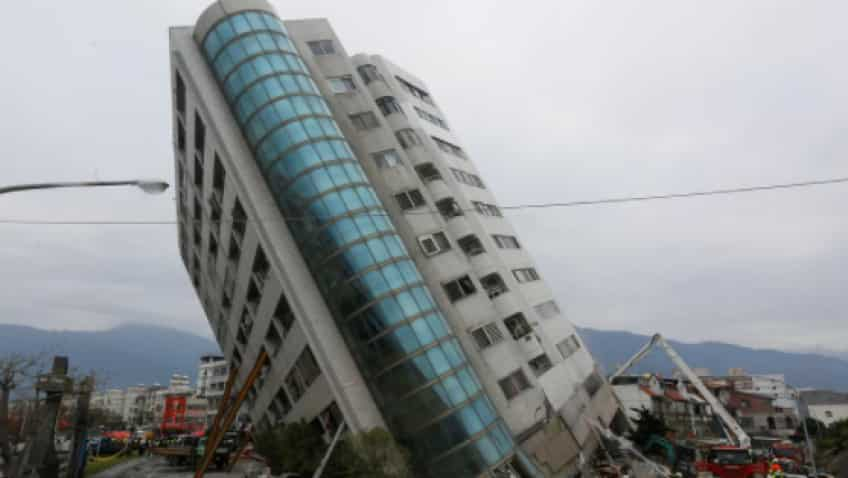Introduction
Earthquake, a term that sends shivers down our spines, is a natural phenomenon that has captivated human curiosity and fear for centuries. In 2023, these earth-shaking events continue to remind us of the raw power of our planet. This blog explores the intricacies of earthquakes and their impact on our lives in the contemporary world.
Understanding Earthquakes
Earthquake, derived from the Greek words "seismos" and "kamno," meaning "shaking" and "I burn," respectively, is a sudden and violent shaking of the ground caused by the movement of Earth's tectonic plates. These massive slabs beneath the Earth's surface are always in motion, albeit at a slow pace, and sometimes, the accumulated stress at plate boundaries is released explosively.
Causes of Earthquakes
Earthquakes are predominantly triggered by the interaction of tectonic plates, but there are other causes as well. The three main types of earthquakes are tectonic, volcanic, and induced.
Tectonic Earthquakes: These are the most common and occur when tectonic plates collide, pull apart, or slide against each other. This causes stress to build up until it's released as an earthquake. The San Andreas Fault in California is a notorious hotspot for tectonic earthquakes.
Volcanic Earthquakes: Volcanic eruptions can produce earthquakes when magma forces its way to the surface. Although less frequent than tectonic quakes, they are still significant.
Induced Earthquakes: Human activities, such as mining, reservoir-induced seismicity, and hydraulic fracturing, can induce earthquakes. These are often smaller but can be devastating in populated areas.
The Impact of Earthquakes
Earthquakes have far-reaching consequences, affecting both the natural environment and human society. Their effects can be devastating, ranging from structural damage to loss of life.
Structural Damage: The most immediate and visible effect of earthquakes is the damage to buildings, bridges, roads, and other infrastructure. Weak construction or lack of adherence to earthquake-resistant building codes can exacerbate this damage.
Tsunamis: In coastal regions, large undersea earthquakes can trigger tsunamis, massive ocean waves that can inundate coastal areas, causing widespread destruction and loss of life.
Landslides: Earthquakes can induce landslides in hilly and mountainous areas, further adding to the destruction.
Aftershocks: Following a major earthquake, aftershocks, which are smaller tremors, can continue for days, weeks, or even months, making recovery efforts more challenging.
Loss of Life and Livelihoods: The human toll of earthquakes is profound, with injuries and fatalities resulting from building collapses and other hazards. The disruption to daily life can have long-lasting economic and social impacts.
Preventing and Preparing for Earthquakes
The key to mitigating the impact of earthquakes lies in prevention and preparation. Governments and communities around the world have taken significant steps to reduce the risk and enhance their ability to respond to seismic events.
Building Codes: Strict building codes that require earthquake-resistant construction techniques have been implemented in many earthquake-prone regions. These measures are essential for reducing structural damage and loss of life.
Early Warning Systems: Advances in technology have allowed for the development of early warning systems that can provide seconds to minutes of notice before the arrival of strong shaking. These systems can save lives and minimize damage.
Emergency Preparedness: Communities and individuals should have earthquake preparedness plans in place, including emergency kits, evacuation routes, and knowledge of how to "Drop, Cover, and Hold On" during the shaking.
Education: Public awareness and education campaigns are crucial in ensuring that people understand the risks and know how to respond during an earthquake.
Earthquakes in the Modern World
In the 21st century, our understanding of earthquakes and our ability to predict and respond to them have greatly improved. Scientists use seismometers, GPS, and satellite technology to monitor ground movement and seismic activity. This data is crucial for understanding earthquake patterns and predicting potential hazard zones.
Earthquake-prone areas, such as the Pacific Ring of Fire and the Himalayan region, continue to be closely monitored. In the event of an impending earthquake, early warning systems can send alerts to mobile devices, providing precious seconds to take cover.
Earthquake Preparedness in 2023
In recent years, countries have invested heavily in earthquake preparedness. Japan, for example, is renowned for its comprehensive earthquake readiness, including earthquake-resistant buildings and extensive public education campaigns. California, too, has stringent building codes and an established earthquake early warning system.
In developing countries, however, the challenges of earthquake preparedness remain significant. These regions often lack the resources and infrastructure to implement robust prevention and response measures. International efforts to support earthquake-prone nations are vital in reducing the impact of seismic events.
The Future of Earthquake Research
As we step into the future, research into earthquakes continues to evolve. Scientists are exploring innovative ways to understand and predict seismic activity, which may lead to improved warning systems and preparedness.
Additionally, the study of induced earthquakes related to human activities is gaining prominence. By understanding the causes and potential mitigation strategies for these events, we can minimize their impact on communities and the environment.
Conclusion
In 2023, the term "earthquake" still holds the power to evoke fear and fascination. As we advance in our knowledge of these natural phenomena, we are better equipped to mitigate their impact and protect the lives and livelihoods of those living in earthquake-prone regions. Through strict building codes, early warning systems, and public education, we can continue to make strides in earthquake preparedness. In the face of nature's mighty tremors, our resilience and adaptability are the keys to a safer and more secure future.

No comments:
Post a Comment